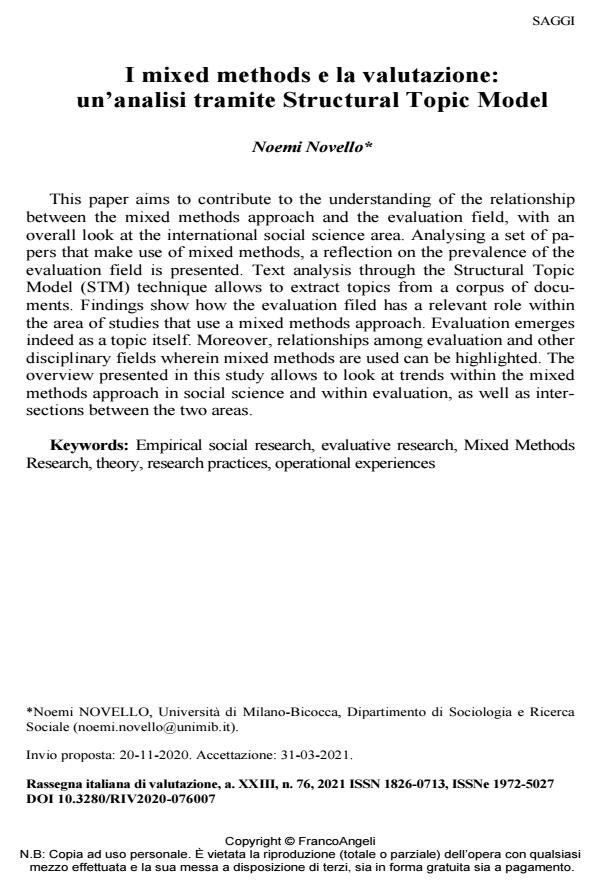I mixed methods e la valutazione: un’analisi tramite Structural Topic Model
Titolo Rivista RIV Rassegna Italiana di Valutazione
Autori/Curatori Noemi Novello
Anno di pubblicazione 2021 Fascicolo 2020/76
Lingua Italiano Numero pagine 16 P. 107-122 Dimensione file 416 KB
DOI 10.3280/RIV2020-076007
Il DOI è il codice a barre della proprietà intellettuale: per saperne di più
clicca qui
Qui sotto puoi vedere in anteprima la prima pagina di questo articolo.
Se questo articolo ti interessa, lo puoi acquistare (e scaricare in formato pdf) seguendo le facili indicazioni per acquistare il download credit. Acquista Download Credits per scaricare questo Articolo in formato PDF

FrancoAngeli è membro della Publishers International Linking Association, Inc (PILA)associazione indipendente e non profit per facilitare (attraverso i servizi tecnologici implementati da CrossRef.org) l’accesso degli studiosi ai contenuti digitali nelle pubblicazioni professionali e scientifiche
This paper aims to contribute to the understanding of the relation-ship between the mixed methods approach and the evaluation field, with an overall look at the international social science area. Analysing a set of papers that make use of mixed methods, a reflection on the prevalence of the evaluation field is presented. Text analysis through the Structural Topic Model (STM) technique allows to extract topics from a corpus of documents. Findings show how the evaluation filed has a relevant role within the area of studies that use a mixed methods approach. Evaluation emerges indeed as a topic itself. Moreover, rela-tionships among evaluation and other disciplinary fields wherein mixed methods are used can be highlighted. The overview presented in this study allows to look at trends within the mixed methods approach in social science and within evaluation, as well as intersections be-tween the two areas.
Parole chiave:Empirical social research, evaluative research, Mixed Methods Research, theory, research practices, operational experiences
Noemi Novello, I mixed methods e la valutazione: un’analisi tramite Structural Topic Model in "RIV Rassegna Italiana di Valutazione" 76/2020, pp 107-122, DOI: 10.3280/RIV2020-076007